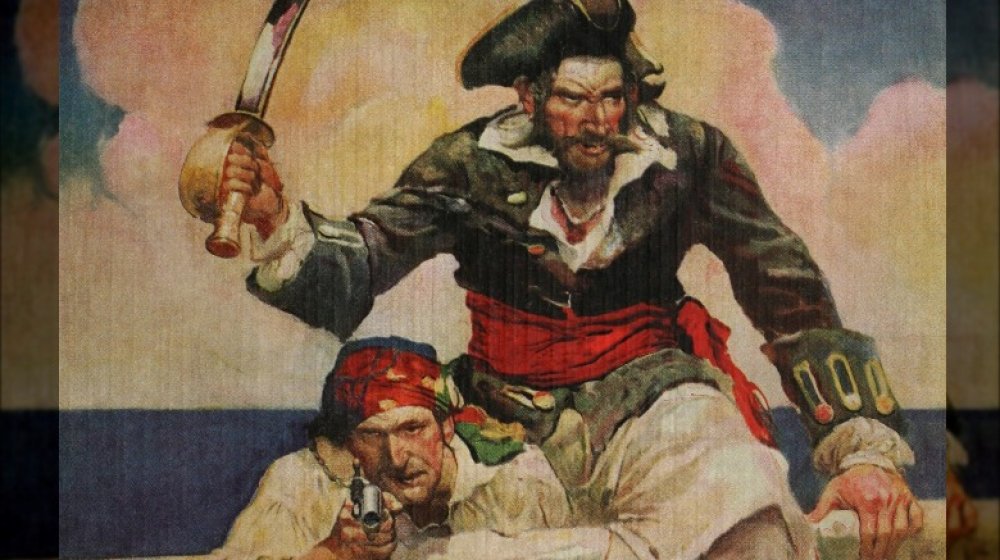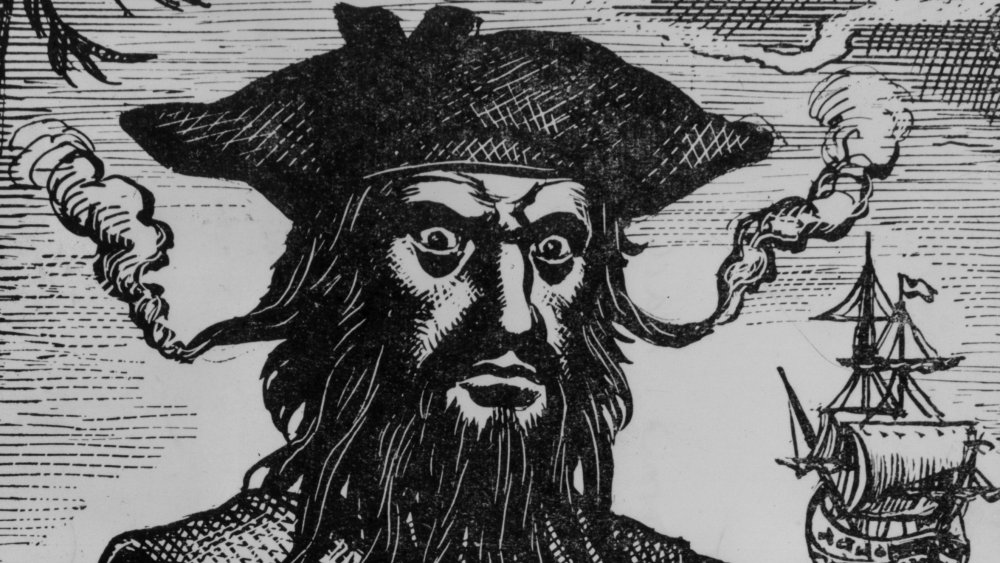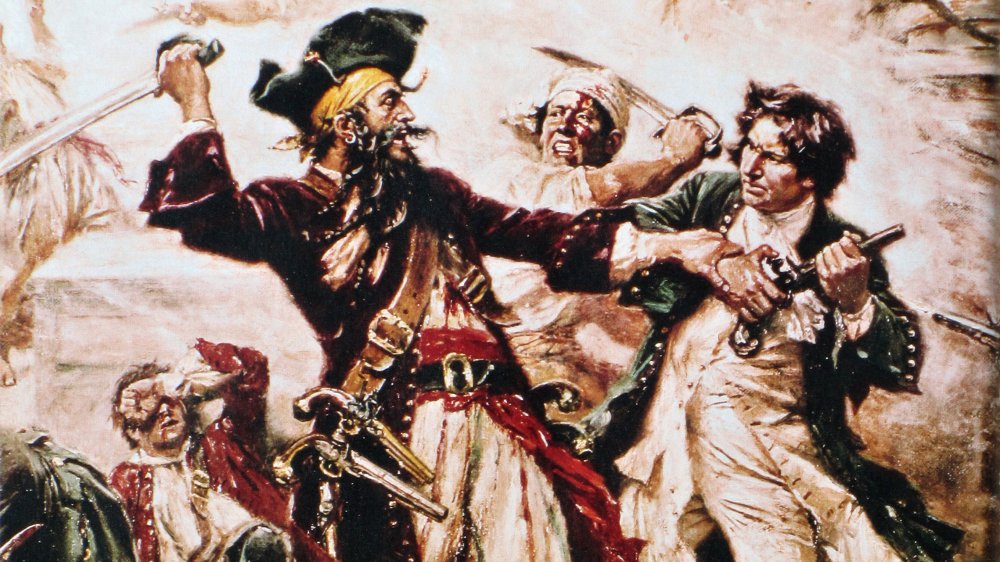Where Is Blackbeard Buried?
"Imagination cannot form an Idea of a Fury from Hell to look more frightful." Captain Charles Johnson used those words to describe Blackbeard in his 1724 work, A General History of the Robberies and Murders of the Most Notorious Pyrates. If Johnson is to be believed, this seafaring Satan prepared for battle by sticking lit matches under his hat and setting his beard ablaze, raising the obvious question of why he isn't called Flameface instead of Blackbeard.
But perhaps the answer is moot because author Eric Jay Dolin points out that no contemporary records of Blackbeard's exploits describe the pirate as a facial arsonist or arr-sonist. Via History, by the time Johnson's work was published, the notorious "sea bandit" — or wet bandit for all you Home Alone fans out there — had been been chilling in Davy Jones' locker for about half a dozen years. Well, technically only most of him.
Yo ho ho and a bottle of rumors
Like many modern depictions of pirates, much of how people picture Blackbeard comes from fanciful distortions. For instance, he wasn't exactly the follicle-burning murderer that Charles Johnson made him out to be. As History details, during the less than two years he spent wreaking havoc on the high seas, the shaggy-faced captain of the Queen Anne's Revenge "rarely" resorted to violence. Then again, maybe he struck so much fear into people that he didn't need to actually strike them.
As recounted by the North Carolina Museum of History, "Blackbeard carried more guns and commanded more men than just about any other pirate of his day." He also received assistance from the treacherous Carolina Coast where he plied his illicit trade. Known as "the graveyard of the Atlantic," this area abounded with sandbars, inlets, and islands, allowing pirates to evade the weightier warships that pursued them.
Blackbeard didn't just earn his ferocious reputation after death; he earned it through death in 1718. The previous year, King George I offered to pardon pirates, and Blackbeard requested said pardon from North Carolina governor, Charles Eden. The pirate retired briefly but soon resumed plundering. However, Virginia governor Alexander Spotswood placed a bounty on Blackbeard's soon-to-be severed head.
From Queen Anne to Queen of Hearts
Lieutenant Robert Maynard pursued the pirate, and a fierce sea battle ensued. After killing the commander of one of Maynard's vessels with cannon fire Blackbeard boarded it with his maties. Below its mostly empty deck was a swarm of unseen enemies whom Maynard had ordered to hide. They ambushed the bearded bandit, who reportedly got shot five times and suffered "20 dismal cuts" before dying. Maynard beheaded Blackbeard, whose body was tossed into the water. According to Time, in 1719, Governor Spotswood impaled Blackbeard's head on a pike along the James River as a warning to aspiring pirates.


